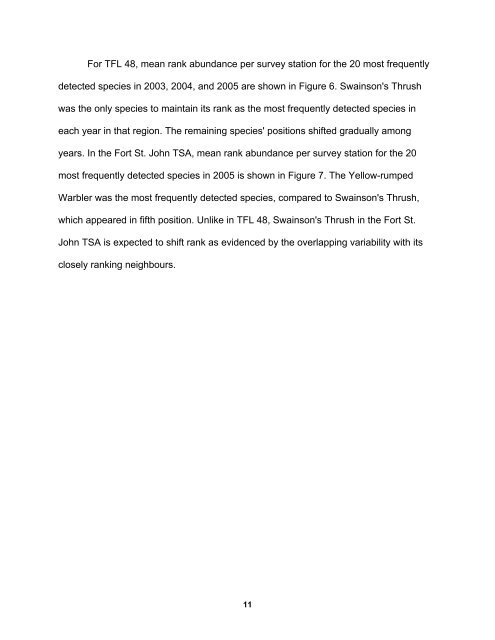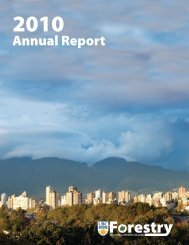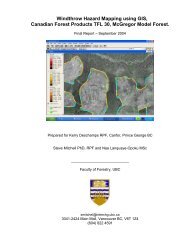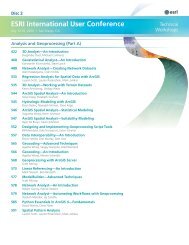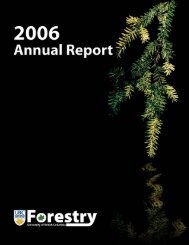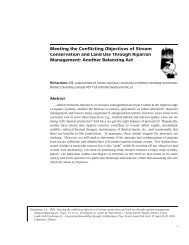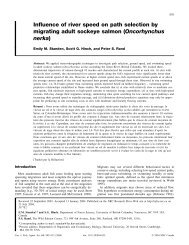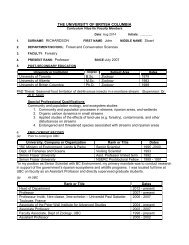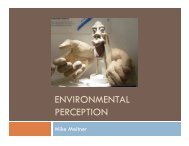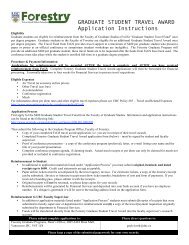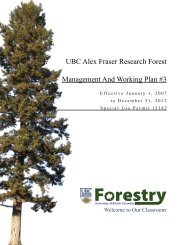A Four-year Summary of Breeding Bird Surveys in TFL 48 ... - BIOD
A Four-year Summary of Breeding Bird Surveys in TFL 48 ... - BIOD
A Four-year Summary of Breeding Bird Surveys in TFL 48 ... - BIOD
You also want an ePaper? Increase the reach of your titles
YUMPU automatically turns print PDFs into web optimized ePapers that Google loves.
For <strong>TFL</strong> <strong>48</strong>, mean rank abundance per survey station for the 20 most frequentlydetected species <strong>in</strong> 2003, 2004, and 2005 are shown <strong>in</strong> Figure 6. Swa<strong>in</strong>son's Thrushwas the only species to ma<strong>in</strong>ta<strong>in</strong> its rank as the most frequently detected species <strong>in</strong>each <strong>year</strong> <strong>in</strong> that region. The rema<strong>in</strong><strong>in</strong>g species' positions shifted gradually among<strong>year</strong>s. In the Fort St. John TSA, mean rank abundance per survey station for the 20most frequently detected species <strong>in</strong> 2005 is shown <strong>in</strong> Figure 7. The Yellow-rumpedWarbler was the most frequently detected species, compared to Swa<strong>in</strong>son's Thrush,which appeared <strong>in</strong> fifth position. Unlike <strong>in</strong> <strong>TFL</strong> <strong>48</strong>, Swa<strong>in</strong>son's Thrush <strong>in</strong> the Fort St.John TSA is expected to shift rank as evidenced by the overlapp<strong>in</strong>g variability with itsclosely rank<strong>in</strong>g neighbours.11


